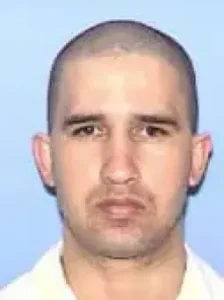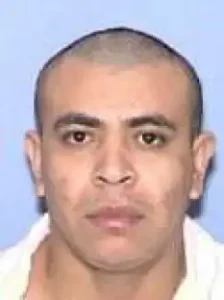Edgardo Cubas and Walter Soto were sentenced to death for the sexual assault and murder of a fifteen year old girl
According to court documents Edgardo Cubas and Walter Soto would kidnap a fifteen year old girl who would be sexually assaulted and murdered: Esmeralda Alvarado
Edgardo Cubas and Walter Soto were also responsible for two other murders: 24-year old Roxana Aracelie Capulin and 38-year old Maria Moreno Rangel
Edgardo Cubas and Walter Soto would be arrested, convicted and sentenced to death
Edgardo Cubas Photos

Walter Soto Photos

Edgardo Cubas and Walter Soto FAQ
Where Is Edgardo Cubas Now
Edgardo Cubas is incarcerated at the Polunsky Unit
Where Is Walter Soto Now
Walter Soto is incarcerated at the Polunsky Unit
Edgardo Cubas and Walter Soto Case
On January 22, 2002, an individual found the partially nude body of fifteen-year-old Esmeralda Alvarado in a secluded area of Harris County. Four days earlier, Ms. Alvarado disappeared after leaving her boyfriend’s house to use a pay phone. Police investigation showed that Ms. Alvarado died from a single gunshot to the head. Her body bore signs of sexual trauma.
Several months passed without any leads. Finally, Cubas’ co-defendant Walter Sorto (“Sorto”) incriminated him in the duo’s nine-month crime spree, of which Ms. Alvarado’s murder was only one incident. On August 21, 2002, the police arrested Cubas. Cubas gave the police five videotaped statements over a two-day period. Cubas’ statements chronicle several robberies, rapes, and murders he committed with Sorto. With regard to Ms. Alvarado’s murder, Cubas explained that he and Sorto were driving around when they saw her talking on a pay phone. Intending to rob her, Sorto forced Ms. Alvarez into the vehicle. After unsuccessfully searching her for money, Cubas began raping Ms. Alvarez. The two men drove to various locations and took turns sexually assaulting her. Finally after traveling to a secluded area, Sorto told Cubas that they would have to kill Ms. Alvarez so that she could not identify them. Cubas originally told the police that Sorto fired the killing shot. In Cubas’ final statement given to Houston Police Department Officer Xavier Avila, he admitted that he shot Ms. Alvarez. (Tr. Vol. 39, State’s Exhibit 7C).
The police interviewed Cubas, a native of Honduras, in Spanish.
The State of Texas charged Sorto with the rape and murder of two women. Sorto received a death sentence for that crime which he committed with Cubas. Sorto v. State, 173 S.W.3d 469 (Tex. Crim. App. 2005).
The State of Texas charged Cubas with capital murder committed during a sexual assault. The trial court appointed Gilberto Villareal and Frances Northcutt to represent Cubas. Trial counsel faced a difficult challenge. Cubas had confessed to the murder. Forensic evidence verified the story that he had related to police officers. Trial counsel adopted the strategy of attacking the admissibility of the various police statements. After a hearing on Cubas’ motion to suppress, the trial court found that one statement in which Cubas discussed some extraneous offenses was inadmissible. The trial court found no constitutional violation in the taking of his other statements, including the one where Cubas admitted that he shot the victim. Still, trial counsel asked the jury to discount Cubas’ statements because the police had allegedly coerced his confession. Conceding that he was guilty of some crime, the defense particularly tried to cast doubt on Cubas’ final statement. The jury instructions, however, allowed for his conviction if (1) he actually killed the victim; (2) he was a party to the offense; or (3) he conspired to kill her. Clerk’s Record at 536-38.Even without his admission to being the shooter, the evidence easily allowed the jury to find him a party to the murder. The jury found him guilty. Clerk’s Record at 545.
Under Texas’ law of the parties “[a] person is criminally responsible as a party to an offense if the offense is committed by his own conduct, by the conduct of another for which he is criminal responsible, or by both.” TEX. PENAL CODE 7.01. A defendant is guilty under a conspiracy liability theory if “acting with intent to promote or assist the commission of the offense, he solicits, encourages, directs, aids, or attempts to aid the other person to commit the offense[.]” Tex. Penal Code 7.02(b).
The jury would decide Cubas’ fate after the presentation of evidence in a separate penalty phase. The State presented extensive testimony in the sentencing hearing about Cubas’ involvement in numerous aggravated robberies, sexual assaults, and even other murders. The parade of witnesses portrayed Cubas as an extremely violent man. Even during his pretrial detention, he repeatedly fought with other inmates and resisted attempts to squelch his violence. The evidence left little question that Cubas would be a future danger to society.
